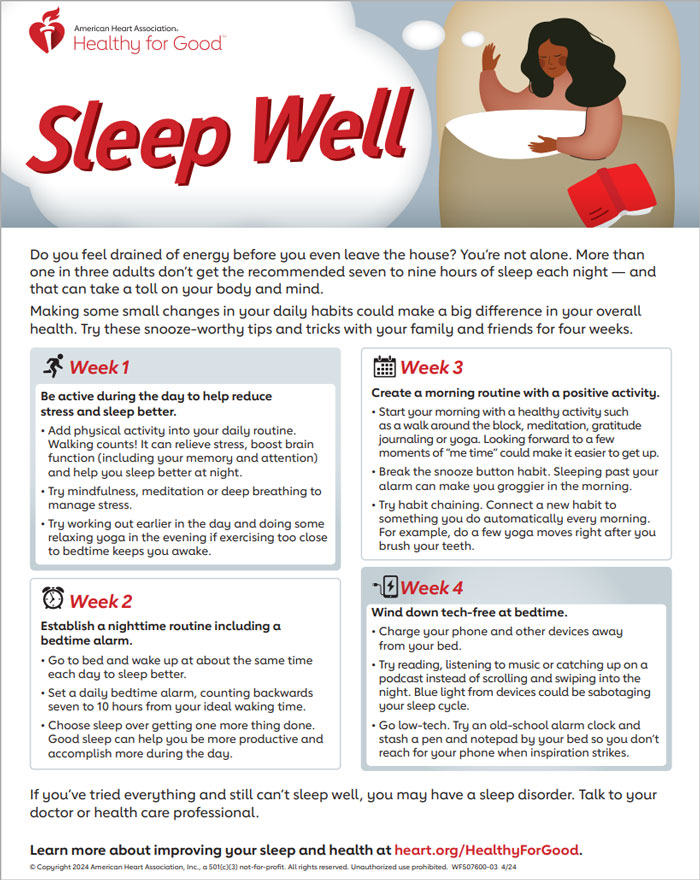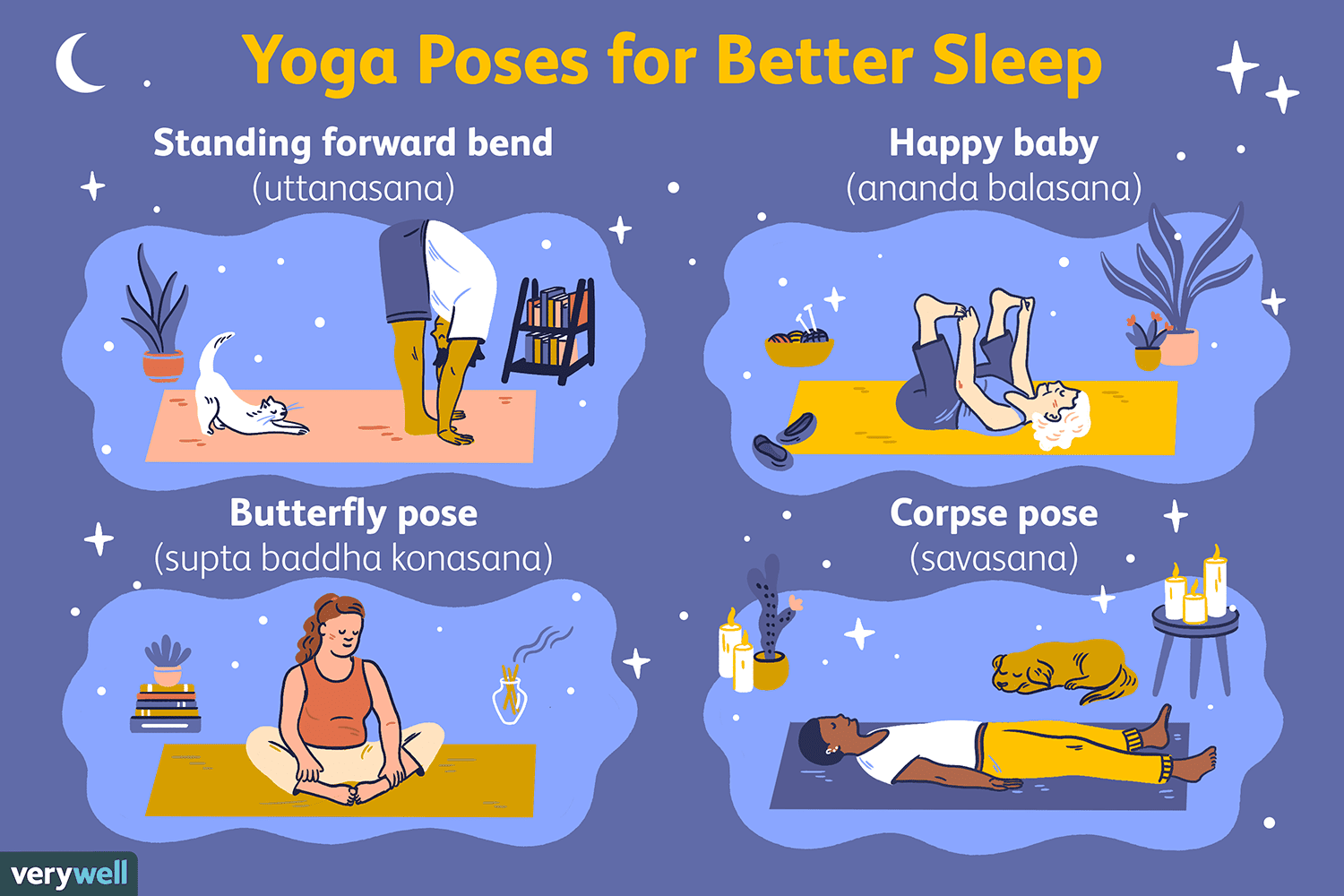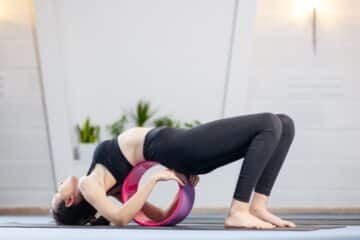For a relaxing bedtime yoga routine, “Sleep Well” offers a quality rest experience. It enhances relaxation and promotes better sleep through soothing yoga poses and deep breathing exercises.
Quality rest is essential for overall well-being, and incorporating a relaxing bedtime yoga routine can greatly benefit your sleep quality and overall health. “Sleep Well” is a guided yoga practice that aims to release tension and calm the mind, preparing your body for a restful night’s sleep.
This routine is designed to help you unwind and alleviate the stress and anxiety often associated with bedtime, allowing you to drift into a peaceful slumber. By focusing on gentle movements and mindful breathing, “Sleep Well” can be a valuable addition to your nightly routine, promoting a sense of tranquility and enhancing your sleep experience.

Credit: www.healthline.com
Benefits Of Bedtime Yoga
Bedtime yoga has several benefits that can help you achieve a better night’s sleep and wake up feeling refreshed and rejuvenated. Incorporating a gentle and relaxing yoga routine into your bedtime ritual can have a significant positive impact on your overall sleep quality and well-being.
Improved Sleep Quality
Practicing bedtime yoga can lead to improved sleep quality. The calming nature of yoga helps to relax your body and mind, making it easier to fall asleep and stay asleep throughout the night. By reducing muscle tension and relieving stress, bedtim e yoga promotes a more restful sleep, allowing you to wake up feeling rested and energized.
Reduced Stress And Anxiety
Bedtime yoga is an excellent way to reduce stress and anxiety that may be keeping you awake at night. Engaging in a series of gentle poses and deep breathing exercises allows you to let go of the day’s worries and calm your mind. As you focus on your breath and gradually release tension in your body, you create a sense of tranquility that helps to alleviate the mental and emotional burden of stress and anxiety.
Preparation For Bedtime Yoga
Prepare for a restful night’s sleep with relaxing bedtime yoga. This yoga routine promotes quality rest and helps you unwind before bed.
Creating a calming environment and wearing comfortable clothing are crucial steps in preparing for bedtime yoga. These key factors help to promote relaxation and improve the quality of your rest.
Create A Calming Environment
To create the ideal setting for bedtime yoga, dim the lights and eliminate distractions. Use soft lighting or candles to set a peaceful ambiance. Consider playing soothing music or nature sounds to calm the mind. Ensuring a tidy and clutter-free space can also contribute to a sense of serenity.
Wear Comfortable Clothing
Select loose, breathable clothing to allow for freedom of movement. Opt for fabrics that feel good against the skin. Avoid anything tight or constricting. Comfortable clothing enhances the overall relaxation experience.
Bedtime Yoga Poses
Child’s Pose
Child’s Pose helps to calm the mind and relax the body. Start by kneeling on the floor, then sit back on your heels and lean forward, stretching your arms out in front of you. Hold this pose for a few deep breaths, and feel the tension melt away from your body.
Legs-up-the-wall Pose
Legs-Up-the-Wall Pose is excellent for reducing stress and promoting relaxation. Lie on your back with your bottom close to the wall, then extend your legs upward, resting them against the wall. Stay in this position for several minutes, focusing on your breath and letting go of the day’s tensions.
Savasana
Savasana, also known as Corpse Pose, is the ultimate relaxation pose. Lie flat on your back, close your eyes, and let your body sink into the floor. Relax every muscle, breathing deeply and finding a sense of peace and calm within.
Breathing Techniques For Better Sleep
Discover the power of breathing techniques for better sleep and unlock the key to a night of ultimate relaxation. Deep belly breathing and the 4-7-8 breath are two essential practices that can help you unwind, let go of stress, and prepare your mind and body for a peaceful slumber. By incorporating these simple yet effective techniques into your bedtime routine, you can improve the quality of your rest and wake up feeling rejuvenated and refreshed.
Deep Belly Breathing
Deep belly breathing, also known as diaphragmatic breathing, is a technique that allows you to tap into your body’s natural relaxation response. This breathing exercise involves taking slow, deep breaths that fully utilize the diaphragm, a muscle located below the lungs. By engaging the diaphragm, you increase the amount of oxygen entering your lungs and promote a sense of calmness and tranquility.
To practice deep belly breathing, follow these steps:
- Find a comfortable position, either lying down or sitting up straight.
- Place one hand on your chest and the other on your abdomen.
- Take a slow, deep breath in through your nose, allowing your abdomen to rise as you fill your lungs with air.
- Exhale slowly through your mouth, focusing on fully emptying your lungs and feeling your abdomen lower.
- Continue this pattern of breathing, inhaling deeply through your nose and exhaling fully through your mouth, for a few minutes.
4-7-8 Breath
The 4-7-8 breath technique, developed by Dr. Andrew Weil, is a simple yet powerful way to induce a state of relaxation and promote better sleep. This technique can be particularly helpful if you find yourself feeling anxious or restless before bedtime.
To practice the 4-7-8 breath technique, follow these steps:
- Find a comfortable position and place the tip of your tongue against the ridge of tissue just behind your upper front teeth.
- Close your mouth and inhale quietly through your nose to a mental count of four.
- Hold your breath for a count of seven.
- Exhale completely through your mouth to a count of eight, making a whooshing sound.
- Repeat this cycle three more times, for a total of four breaths.
By incorporating these breathing techniques into your bedtime routine, you can create a calming ritual that signals to your body and mind that it’s time to let go of the day’s stresses and enter a state of deep relaxation. Take a few moments each night to practice these techniques and witness the transformative power of breath as you drift off into a restful sleep.
Tips For Incorporating Bedtime Yoga Into Your Routine
Improve your quality of sleep with relaxing bedtime yoga. Incorporate these tips into your routine for a restful night’s sleep.
Establish A Regular Practice
Establishing a regular bedtime yoga practice can greatly improve your sleep quality. By consistently dedicating time to relax and unwind before bed, you help signal to your body that it is time to sleep. Creating a regular routine helps to establish a habit, making it easier to incorporate yoga into your nightly wind-down. Aim to practice yoga at the same time each night, whether it’s 30 minutes before bed or right before you crawl under the covers. A regular practice ensures that your body and mind become accustomed to the relaxation techniques, making it easier to drift off into a deep and restful snooze.
Avoid Stimulating Activities Before Bed
When it comes to bedtime yoga, it’s important to avoid engaging in stimulating activities that can hinder your ability to fall asleep. To fully reap the benefits of your practice, refrain from consuming caffeine or engaging in vigorous exercise in the hours leading up to bedtime. Instead, focus on calming activities that promote relaxation, such as reading a book, taking a warm bath, or practicing gentle meditation. Avoiding stimulating activities allows your body to unwind and prepares you for a peaceful night’s sleep. Here are a few tips to help you incorporate bedtime yoga into your routine:
- Designate a quiet space in your bedroom or create a cozy corner where you can practice without distractions.
- Invest in supportive props such as a yoga mat, bolsters, and blankets to enhance your comfort during poses.
- Begin with a short nighttime yoga routine, gradually increasing the duration as you become more comfortable.
- Experiment with different types of yoga, such as gentle stretching, restorative poses, or guided meditation, to find what works best for you.
- Consider practicing yoga with a guided video or audio recording to help you stay focused and maintain a consistent flow.
By incorporating these tips into your bedtime routine, you can create a calming environment conducive to restful sleep. Remember that consistency is key, so stick to your chosen schedule and give your body the gift of quality rest through the practice of bedtime yoga.

Credit: www.health.harvard.edu

Credit: www.heart.org
Frequently Asked Questions For Sleep Well: Relaxing Bedtime Yoga For Quality Rest
How Can Bedtime Yoga Help Improve Sleep Quality?
Yoga promotes relaxation, reduces stress, and enhances breathing and circulation. It also helps release tension in the body, preparing you for a good night’s sleep.
Which Bedtime Yoga Poses Are Best For Quality Rest?
Some recommended bedtime yoga poses for quality rest include Child’s Pose, Legs Up the Wall, Happy Baby Pose, and Corpse Pose. These poses encourage relaxation, soothing the nervous system and preparing the body for sleep.
Can Bedtime Yoga Help Reduce Insomnia Symptoms?
Yes, practicing bedtime yoga consistently can be an effective way to reduce insomnia symptoms. The gentle movements, deep stretches, and focus on breathing can calm the mind, slow down cortisol production, and help regulate the sleep-wake cycle.
When Is The Best Time To Do Bedtime Yoga?
The best time to do bedtime yoga is about an hour or two before you plan to sleep. This allows your body to wind down and relax. Avoid vigorous yoga or any stimulating poses close to bedtime, as they may energize you instead of promoting quality rest.
Conclusion
Incorporating a relaxing bedtime yoga routine into your nightly ritual can significantly enhance the quality of your sleep. By gently stretching your body and calming your mind, these simple yoga poses help release tension and promote deep relaxation. In turn, this can lead to improved sleep, reduced stress levels, and a more refreshed and rejuvenated feeling upon waking.
So, why not give it a try tonight and experience the transformative power of bedtime yoga for yourself? Sweet dreams await!




